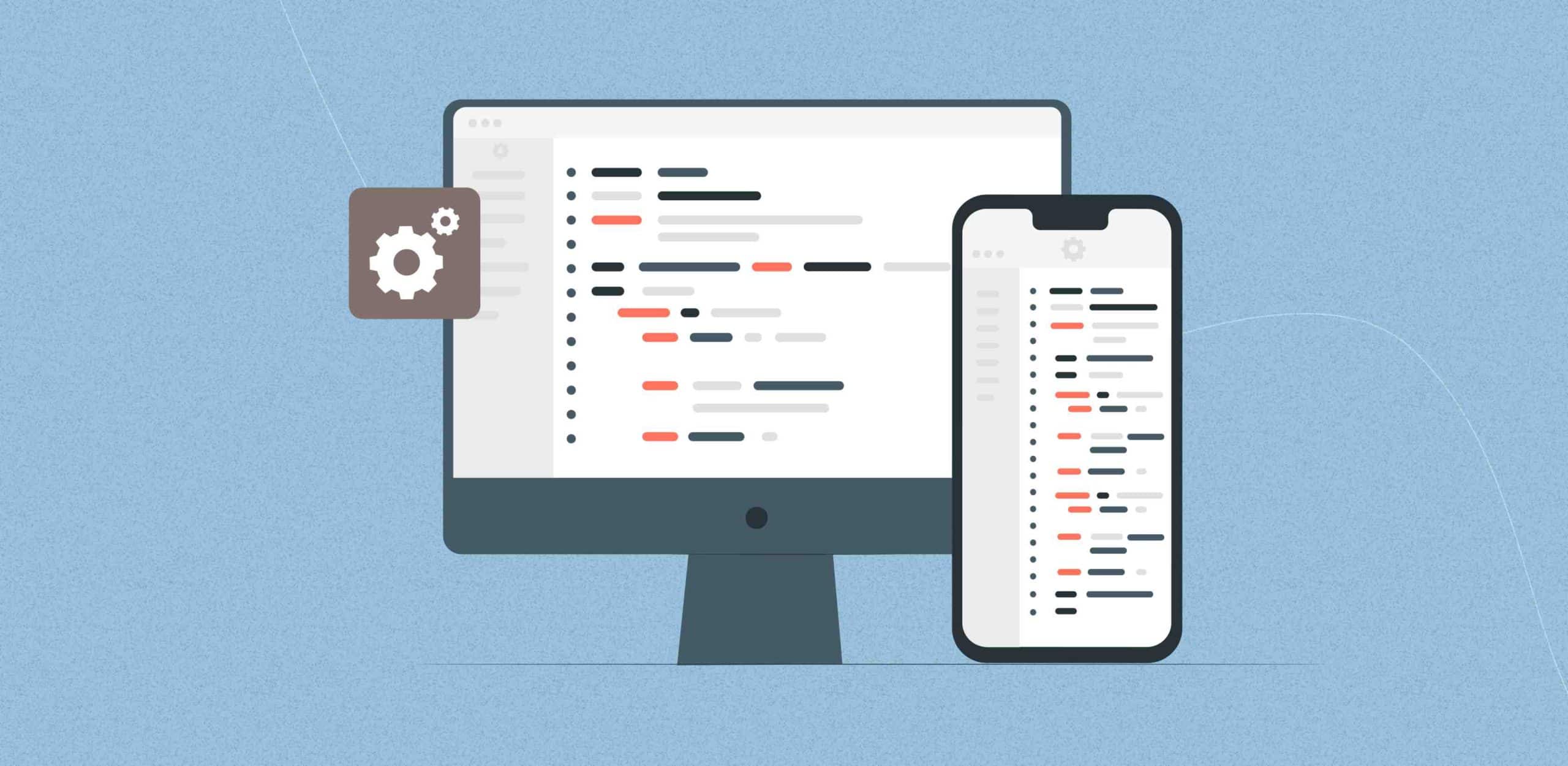WebRTC development is transforming the landscape of real-time communication, a critical element for business efficiency and customer satisfaction in today’s digitally-driven world. Custom WebRTC (Web Real-Time Communication) development services lead this revolution by offering tailored solutions designed to meet the unique communication needs of businesses across various sectors.
This blog delves into the intricacies of custom WebRTC development, shedding light on the advantages and processes involved, and illustrating how organizations can significantly benefit from these specialized services.
Custom WebRTC Development: Market Overview
The global WebRTC market is currently experiencing a period of exponential growth, a trend that is projected to continue in the coming years. This surge is largely driven by the escalating demand for real-time video, voice, and data exchange capabilities across multiple sectors. With advancements in technology and increasing internet penetration, WebRTC has emerged as a pivotal technology for enhancing communication infrastructure.
Read the blog on AI and WebRTC: Future of Enhanced Communication Applications.
Key Industries Embracing WebRTC
WebRTC Development for Telehealth: In the healthcare sector, WebRTC is revolutionizing patient care by facilitating real-time telemedicine solutions. This technology enables doctors to conduct virtual consultations, provide emergency assistance, and offer follow-up care with ease and efficiency, all in real-time. The seamless exchange of medical data and the ability to communicate face-to-face with patients remotely are improving patient outcomes and expanding access to healthcare services.
WebRTC Development for Remote Education: Educational institutions are leveraging WebRTC to deliver interactive and accessible learning experiences. Through real-time video lectures, virtual classrooms, and instant content sharing, WebRTC empowers educators to reach students regardless of geographical barriers. This technology also supports a collaborative learning environment by enabling real-time interactions among students and teachers.
WebRTC Development for Customer Service: The customer service industry is utilizing WebRTC to enhance the customer experience through instant video, voice calls, and live chat functionalities embedded directly within websites and mobile apps. This direct communication streamlines customer interaction, reduces resolution times, and eliminates the need for third-party telecommunication services.
WebRTC Development for Financial Services: In the finance sector, WebRTC is being used to secure and simplify customer interactions. Banks and financial institutions implement WebRTC to facilitate secure face-to-face meetings, verify identities during digital transactions, and provide personalized customer support, thereby enhancing trust and compliance with regulatory requirements.
Growth Drivers
Custom WebRTC Development Services
Custom WebRTC development encompasses a range of services designed to create personalized communication solutions. These services include the development of bespoke features, integration with existing systems, ensuring scalability, and providing robust security measures. Here’s a closer look on the WebRTC development services:
WebRTC Consulting
Before diving into development, it’s crucial to understand the specific requirements and challenges of a business. WebRTC consulting services provide an in-depth analysis of a company’s communication needs, proposing strategies and technological frameworks that best suit their objectives. Consulting also involves assessing the feasibility of integrating WebRTC technologies with existing infrastructure to ensure a smooth adoption process.
Chat & Messaging App Development
In an era where instant communication is paramount, custom chat and messaging applications powered by WebRTC technology offer real-time, secure, and efficient text, voice, and video messaging solutions. These apps are designed with scalability in mind, enabling businesses to handle increasing volumes of messages without degradation in performance.
Video Conferencing App Development
Custom video conferencing apps are among the most sought-after WebRTC solutions. These applications are designed to offer features beyond the standard video calling, such as screen sharing, recording, multi-party calls, and real-time collaboration tools. Tailoring these apps to specific business needs helps in enhancing team collaboration and customer interaction, regardless of geographic locations.
Telemedicine App Development
The healthcare industry benefits significantly from custom WebRTC development, particularly through telemedicine applications. These apps facilitate real-time, confidential, and accessible consultations between patients and healthcare providers. Custom telemedicine apps can integrate features like appointment scheduling, medical record sharing, and compliance with healthcare regulations, thereby enhancing patient care and operational efficiency.
Online Video Streaming App Development
WebRTC technology is also pivotal in developing online video streaming applications. These platforms require high levels of scalability and robust security to handle live streaming and broadcasting events to a large audience. Custom development of streaming apps can include features like adaptive bitrate streaming, chat overlays, and audience interaction tools, providing a comprehensive and interactive viewer experience.
Hire Dedicated WebRTC App Developers
For businesses looking to expand their development capabilities, hiring dedicated WebRTC app developers is a viable option. This service allows companies to augment their teams with expert developers who specialize in WebRTC projects. These developers can work as part of the in-house team, providing their expertise directly where it’s needed, thus accelerating the development process and ensuring higher quality outcomes.
Contact us today, and let’s discuss how we can assist you in achieving your eLearning goals.
Benefits of Custom WebRTC Development for Businesses
The implementation of custom WebRTC development brings a multitude of benefits to businesses striving to enhance their operational efficiency and customer relations. These solutions are not only versatile and powerful but also cater specifically to the unique needs and challenges of each organization. Here are some of the key advantages:
Enhanced Communication
Real-time interaction is a game-changer in the modern business environment. Custom WebRTC solutions enable seamless video, audio, and data communication across various platforms and devices, ensuring that team members can connect and collaborate effectively regardless of their location. This instant connectivity can lead to faster decision-making, more cohesive team dynamics, and a more agile response to business challenges. Internally, it bridges the gap between different departments, promoting an integrated approach to solving business problems. Externally, it enables direct communication with customers, providing them with immediate responses and enhancing their overall experience with your brand.
Increased Engagement
In a world where customer retention is as crucial as acquisition, engagement is key. Custom WebRTC solutions provide interactive customer service options, such as live video support and real-time chat, which are becoming increasingly popular among consumers who prefer immediate assistance over traditional, slower forms of communication. By implementing these solutions, businesses can transform their customer interactions into more personalized and satisfying experiences, thereby increasing loyalty and trust. Moreover, these interactive tools can be used internally to engage employees in training sessions, virtual meetings, and team-building activities, which are vital for maintaining employee morale and productivity.
Cost Efficiency
Integrating custom WebRTC solutions into existing infrastructures is cost-effective. These technologies eliminate the need for expensive traditional communication hardware and the associated maintenance costs. By leveraging the internet for communication, WebRTC drastically reduces the costs involved in long-distance calls and multimedia transmissions. Additionally, since WebRTC solutions are custom-tailored, they are designed to fit perfectly within your existing technological environment, which minimizes redundancy and ensures that you only pay for what you need. The scalability of WebRTC also means that you can start small and expand as needed, optimizing your investment at every stage of growth.
Scalability
One of the most significant benefits of custom WebRTC development is its scalability. Whether your business is a startup or a multinational corporation, WebRTC solutions can be scaled to accommodate your growing needs. This means that as your business expands, your communication systems can grow without losing performance or increasing costs proportionately. The ability to scale effectively ensures that you can continue to maintain high standards of communication across all levels of your business, which is crucial for sustained growth. This scalability also makes WebRTC an ideal solution for businesses that experience seasonal spikes in demand, as it allows for easy adjustment of resources during different times of the year.
Discover the top 8 pre-launch steps in WebRTC app development.
Custom WebRTC Development Process
The process of developing a custom WebRTC application is intricate and multifaceted, requiring a deep understanding of the business’s needs and a rigorous approach to software development. Here’s a detailed look at each step in the process:
Requirement Analysis
The first and most crucial step in the WebRTC development process is requirement analysis. This phase involves detailed discussions with stakeholders to understand the specific communication needs of the business. It includes identifying the types of communication required (audio, video, data sharing), the necessary features (like recording, screen sharing, or live broadcasting), and the scale at which the application needs to operate. The goal here is to gather as much information as possible to create a clear, comprehensive requirements document that will guide the entire project.
Design
Once the requirements are clearly understood, the next step is to design the solution. This involves creating architectural designs that outline how the WebRTC components will interact with existing systems and with each other. User interface (UI) design is also crucial at this stage, as it ensures the solution is not only functional but also user-friendly and aligned with the business’s branding. The design phase may include the creation of wireframes, mockups, and user flow diagrams to visualize the end product. Effective design is key to ensuring that the final product is easy to use and meets the users’ needs.
Development
The development phase is where the actual coding, integration, and setup of the WebRTC application take place. This step is typically the most resource-intensive, as it involves multiple developers working on different parts of the project, such as front-end and back-end development. During this stage, developers write the code that will make up the core of the application, integrating various APIs and ensuring that all components work seamlessly together. This phase also involves setting up the necessary infrastructure for the application, including servers and databases, and ensuring that the application is scalable and secure.
Testing
Testing is critical to ensure that the WebRTC application is secure, reliable, and performs well across all intended devices and networks. This phase involves multiple types of tests, including unit tests to check individual components, integration tests to ensure that the components work well together, and system tests to evaluate the performance of the entire application. Security testing is also crucial, as WebRTC applications often handle sensitive data and require robust security measures to prevent unauthorized access and data breaches. The testing phase helps identify any bugs or issues that need to be resolved before the application can go live.
Deployment and Maintenance
The final step in the WebRTC development process is deployment, where the application is launched and made available to users. This may involve deploying the application to a production environment and setting up any necessary monitoring tools to ensure its performance can be continuously evaluated. After deployment, ongoing maintenance is critical to ensure the application remains functional and secure over time. This includes regular updates to the software, scaling the infrastructure as usage grows, and providing support to address any issues users may encounter.
How to Get Started with Custom WebRTC Development?
Embarking on a journey toward custom WebRTC development doesn’t have to be complex or overwhelming. By following a structured approach, you can ensure that the solutions developed not only meet your immediate needs but are also scalable and future-proof. Here’s a detailed guide on how to get started:
Identify Your Needs
The first step in custom WebRTC development is to clearly define what you expect from your real-time communication solutions. Consider the specific challenges your business faces that could be addressed with better communication tools. Are you looking to improve internal team collaboration, enhance customer service interactions, or perhaps create a new platform for community engagement? Here are some considerations to help you outline your needs:
- Functionality: What specific features are necessary? Do you need video, voice, text chat, or file sharing capabilities?
- Integration: How will the WebRTC solution integrate with your existing infrastructure?
- User Experience: What kind of user interface (UI) and user experience (UX) are you aiming for?
- Compliance and Security: Are there any regulatory compliance issues to consider? What level of security is required?
Choose the Right Partner
Selecting the appropriate WebRTC app development company is crucial. This partner will not only develop the required solution but will also play a significant role in the strategic planning of its implementation. Look for a company with:
- Proven Expertise: Check their portfolio for similar projects and technologies used.
- Client Testimonials: Look for feedback from past clients to gauge their satisfaction and the company’s handling of support and maintenance.
- Development Approach: Ensure their development methodology aligns with your business’s operational style.
- After-Support: Post-development support is vital. Check if they offer reliable maintenance and service upgrades.
Get to know how to select the right WebRTC app development company for your business.
Plan Your Budget
Understanding the financial aspect of custom WebRTC development is fundamental. Costs can vary widely depending on the complexity of the project and the reputation of the service provider. Here’s how to plan your budget:
- Cost Analysis: Request detailed quotes from several developers to compare costs against services offered.
- Future Costs: Consider the long-term costs of maintaining and updating your application.
- ROI Estimation: Evaluate the potential return on investment that the new tools could bring through increased productivity or enhanced customer interaction.
Engage in a Pilot Project
Before fully committing to a large-scale development, initiating a pilot project can be a practical approach. This allows you to:
- Test the Concept: Verify if the proposed solution effectively addresses your needs.
- Gauge Performance: Monitor the performance and iron out any technical issues.
- Evaluate Partner Compatibility: Assess how well the development company understands your business and adjusts to feedback.
- Scale Up: Once satisfied with the pilot, you can confidently scale the project to full deployment with a clearer understanding of the costs, timeline, and expected outcomes.
What is the Future of Custom WebRTC Development?
The future of WebRTC development looks incredibly promising as it aligns with the rapid advancements in technology that aim to revolutionize how businesses communicate. Emerging technologies such as artificial intelligence (AI), machine learning (ML), and the Internet of Things (IoT) are poised to significantly enhance the capabilities and functionalities of WebRTC applications. Here’s a closer look at what the future holds for custom WebRTC development:
Integration with Artificial Intelligence and Machine Learning
AI and ML are beginning to play pivotal roles in enhancing WebRTC solutions by introducing capabilities such as automated video analysis and real-time decision-making. For example, AI can be used to optimize video quality in real-time by adjusting resolutions based on available bandwidth, thus ensuring smoother communication experiences even under fluctuating network conditions. Moreover, machine learning algorithms can analyze communication patterns to provide insights that help businesses improve user engagement and satisfaction.
Enhanced Security Protocols
As WebRTC applications handle a significant amount of sensitive data, enhancing security is paramount. Future developments in WebRTC are likely to incorporate more advanced security protocols to safeguard communications. This includes the implementation of end-to-end encryption, secure real-time transport protocol (SRTP) enhancements, and more robust authentication mechanisms. These improvements will help ensure that business communications remain confidential and are protected from unauthorized access or breaches.
More Immersive Communication Experiences
With the integration of IoT, WebRTC applications will become even more immersive and interactive. IoT devices can be used in conjunction with WebRTC to enable new forms of communication and interaction. For instance, WebRTC could enable a customer service system where the support agent not only communicates via video but can also remotely control IoT-enabled devices to troubleshoot issues directly. This could be particularly transformative in industries such as healthcare, where real-time remote monitoring and assistance are essential.
Impact of 5G Technology
The rollout of 5G technology is set to dramatically improve the performance of WebRTC applications by providing higher bandwidth, lower latency, and increased reliability. These improvements will enhance the video and audio quality of WebRTC calls and enable more consistent connectivity, even in mobile environments or in areas with traditionally poor internet coverage. The enhanced capabilities provided by 5G will allow for more complex and demanding applications of WebRTC, pushing the boundaries of what can be achieved with real-time communication technologies.
Expansion into New Industries
As these technologies evolve, so too will the applications of WebRTC, expanding its use beyond traditional sectors like telecommunications and into fields such as augmented reality (AR), virtual reality (VR), and even autonomous vehicles. For instance, real-time communication powered by WebRTC could be used for remote assistance via AR glasses or for communication between autonomous vehicles to improve road safety.
Conclusion
Custom WebRTC development offers a pathway to innovative, efficient, and scalable communication solutions tailored to specific business needs. As the market continues to evolve, staying ahead of the curve with advanced WebRTC solutions will be crucial for businesses aiming to enhance their operational capacities and customer interaction strategies.
Are you ready to implement a cutting-edge WebRTC application tailored for your business needs? Contact Enfin, a leading WebRTC development company, to see how we can transform your communications solutions with bespoke WebRTC development. Reach out today to begin your journey towards enhanced real-time communication.
Let’s transform your business for a change that matters.
F. A. Q.
Do you have additional questions?
What is WebRTC?
WebRTC (Web Real-Time Communication) is an open-source project that enables real-time communication capabilities such as audio, video, and data sharing directly within web browsers and mobile applications without the need for additional plugins or software.
Why should businesses consider custom WebRTC development?
Custom WebRTC development allows businesses to tailor communication solutions to their specific needs, enhancing efficiency, customer satisfaction, and competitive advantage by integrating unique features that standard solutions do not offer.
What are the benefits of custom WebRTC development for businesses?
The benefits include enhanced real-time communication, improved customer engagement, cost efficiency through direct integration, and scalability to support business growth.
How does custom WebRTC development improve security?
Custom WebRTC development can incorporate advanced security measures like end-to-end encryption, secure real-time transport protocols, and custom authentication methods to protect communications and data.
Can WebRTC be integrated with existing business systems?
Yes, WebRTC can be seamlessly integrated with existing business systems such as customer relationship management (CRM) tools, enterprise resource planning (ERP) systems, and other software applications to streamline operations and communication.
What industries can benefit from WebRTC development?
Industries like healthcare, education, finance, customer service, and many others can benefit from WebRTC development due to its versatility in supporting real-time, multimedia communication and data sharing.
What new features can AI and machine learning introduce to WebRTC applications?
AI and machine learning can introduce features such as automated video quality adjustment, real-time content analysis, speech recognition, and predictive analytics to enhance the functionality and user experience of WebRTC applications.
How will 5G technology impact WebRTC applications?
5G technology will enhance WebRTC applications by providing higher bandwidth, reduced latency, and more reliable connections, thereby improving the overall quality and reliability of real-time communications.
What does the custom WebRTC development process involve?
The process typically involves stages such as requirement analysis, solution design, application development, rigorous testing, and ongoing maintenance and support.
How can a business start with custom WebRTC development?
Businesses can start by identifying their specific communication requirements, selecting a competent WebRTC development company with proven expertise, planning the project scope and budget, and engaging in a pilot project to validate the concept before full-scale implementation.














